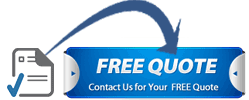Finance
Case information
Pest Go Ltd develops and sells pest management products and services to residential and commercial customers. The company recently spent $10 million on the research and development of a new product (“Secret X”), which is now ready to take to market. Pest Go has asked you to undertake a financial analysis of this implementation stage of the project, which you will provide in the form of a spreadsheet and a memo to the CEO.
Memo To CEO Finance Assignment-Australia

Secret X is a new method for protecting the barriers of buildings from termites. It will cost more to produce and install than existing termite barriers on the market and the project’s risk is thought to be significantly higher than PestGo’s current operations. However, Secret X’s benefit lies in being nontoxic, thus protecting soils, waterways, and health, and for this reason the Board of Directors is very supportive of the project, given one of the key strategies of the company is to become more environmentally and socially responsible. They hope Secret X will become more popular than the
toxic termite barriers that the company and its competitors currently sell.
You have been advised to assess the project based on a 5 year life because after that technological improvements and new competitive products are likely to result in Secret X becoming obsolete. You have been given the following forecasts, all based on estimates internally generated by managers of relevant departments within Pest Go.
Tentative annual sales revenues of $20 million are expected for Secret X in its first year. These are expected to grow by 20% per year in each of years 2, 3 and 4. However, a drop-off in sales revenues of 30% is expected in year 5 as competitive products enter the market.
Memo To CEO Finance Assignment-Australia
Forecast cost of goods sold is 65% of sales revenues, while other operating expenses (excluding depreciation) directly related to the project are expected to be $4 million in the first year and increase by 2% per year (the consensus forecast inflation rate in the economy) thereafter. Interest expense related to the project is estimated to be $0.75 million per year, a cost already confirmed with the company’s bankers.
The project will need net working capital on hand equal to 25% of each upcoming year’s sales revenue forecast. This estimate is based on historical customer and production information for very similar products and using existing suppliers whose contract arrangements are expected to continue. The investment in working capital will be fully recovered by the end year 5.
An upfront investment in non-specialised plant and equipment will be required for the project.Quotes already received suggest plant and equipment costs will total of $15 million. These costs will be depreciated to a zero book value using the prime cost method over the five-year life of the project. At the end of the project, the equipment will be sold for its estimated market scrap value at that time of 2 $2 million. Project operations will be run out of a factory that Pest Go already owns but currently rents to another company for $0.7 million per year, an amount that was likely to continue for the next five years.
Pest Co has a 7% weighted average cost of capital and a 30% income tax rate. For the purpose of this case analysis, all taxes are paid in the year of income to which they relate, the company will have taxable income from other projects and the company is not eligible for any special research and development tax treatment.
Required:
Prepare (1) a spreadsheet financial analysis of the proposed project and (2) a memo to Pest Co’s CEO that summarises your key results and provides recommendations on the project.
Memo To CEO Finance Assignment-Australia

Carefully note the following points:
- Analyse base case (expected) cash flows and potential uncertainty.
- For your base case analysis, calculate the five investment decision criteria listed in the relevant topic’s Overview document.
- If you make any assumptions beyond those given in the case information, explain them.
- Recommendations should address the decision suggested by the base case, along with further follow up or other matters the company should consider prior to making a final decision.
- Include an appendix to the memo that provides a readable screenshot(s) of your base case cash flows, the purpose of which is to allow the CEO to see line item detail without needing to spend time going to the spreadsheet itself.
- Within the memo body, you are advised to use tables and/or figures to assist decision makers quickly see main points and to visualise your analysis results but ensure the tables and figures are discussed or explained.



